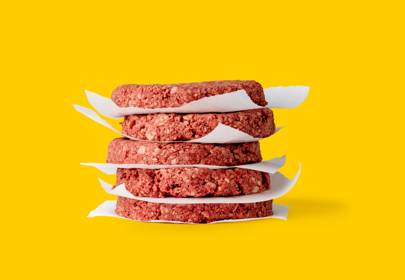
In a world where truth is mutable, there is one certainty we can cling to. Meat is meat. Whether it’s a juicy hunk of steak, little crunchy bits of bacon or whatever it is they squeeze inside sausages, humans are generally agreed that ‘meat’ refers to anything that used to be attached to an animal but is now on a dinner plate.
But what about a burger that never saw the inside of a cow, or a chicken nugget grown inside a petri dish in a californian lab? Are they still meat?
The answer to that depends on who you ask. But as clean (or should that be lab-grown?) meat companies race to bring the first animal-free meat products to the US, the food industry is flipping semantic somersaults as it tries to decide how to refer to this new way of growing food.
In July, clean meat startups, regulators and lobbyists met in Maryland to discuss the future of the industry. At the moment, it’s not clear whether clean meat will fall under the regulation of the the Food and Drug Administration (FDA), which regulates 80 per cent of food in the US or the US Department of Agriculture (USDA), which is responsible for slaughtered animals and birds.
This slightly wonkish distinction has important implications for the future of the industry. If clean meat falls under the USDA, it’s likely that it’ll be marketed and regulated as a meat product, but if it falls under the FDA there’s a chance that the regulator may label clean meat as something else entirely.
There’s no shortage of alternative names when it comes to slaughter-free meat. There’s clean meat, of course. But there’s also lab-grown meat, cultured meat and synthetic meat. According to a spokesperson a from the US Cattlemen's Association, the problem is with the term “meat,” not what goes before it it. “We believe that the term ‘meat’ pertains exclusively to a protein food product that was harvested from the flesh of an animal in a traditional manner,” Maggie Nutter said at the July 12 meeting.
Each name has its adherents and detractors, so settling on one that pleases everyone is no simple task. “There’s no such thing as a neutral name, all of these have certain connotations,” says Chris Bryant, who studies the public perception of cultured meat at the University of Bath. Clean meat hints at its environmentally-friendly origins with its neat nod towards clean energy, but others find it too clinical and sanitised
Some – like the Cattlemen’s Association – wish to put a lexical line in the sand between meat produced through animal slaughter and that grown in the lab. But the wider meat industry is also one of the biggest backers of slaughter-free protein. In January 2018, Tyson Foods, one of the largest meat-producing companies, invested in food tech startup Memphis Meats and expressed its enthusiasm for what it called “cultured meat and plant-based protein.”
Most of the startups and nonprofits in the space, however, have coalesced around another term: clean meat. Bruce Friedrich at The Good Food Institute (GFI), a nonprofit that supports animal-free alternatives to meat, egg and dairy products, didn’t invent the term, but his organisation has helped establish the phrase as the name of choice for lab-grown animal flesh.
Back in late 2016, Friedrich says, many in the fledgling field were still referring to cultured meat, but that term already has some baggage in the food industry. “Folks there were confused by the nomenclature 'cultured meat,’” says Friedrich. To consumers, the world ‘cultured’ might conjure up images of probiotic yoghurts, while in agriculture it’s more likely to refer to fish grown in tanks or artificial enclosures.
After weeding out some alternatives names, like humane and animal-friendly meat, the GFI polled consumers to find out what they preferred. Clean meat came out on top, a finding that has been replicated in other studies, including Bryant’s own more research. And, slowly, it’s starting to stick. “Clean meat is now far more common than cultured meat in press discussions,” says Friedrich.
For Bryant, the most important point is that clean meat is designated as just that – meat. If lab-grown burgers appear alongside conventional burgers in the refrigerated aisle in supermarkets then that’ll imply to would-be consumers that there’s not much separating the two products. “Classification as meat would lead to significantly more demand than classification as something other than meat - but I don't think that classification as non-meat would be disastrous,” he says.
But why stop at lab-grown meat? “I think that plant-based meat also qualifies as meat,” says Friedrich, pointing to the bleeding Impossible Burger as an example of plant-based food so close to seared animal flesh that it could stretch the definition of meat itself. “Everything in meat also exists in plants,” he says. You’ve got lipids, amino acids, minerals, water, all arranged into a patty that tastes and feels like the real thing. Why not call it meat?
https://www.wired.co.uk/article/naming-clean-meat-lab-grown-meatBagikan Berita Ini














0 Response to "The quest for animal-free food is reshaping what we call meat"
Post a Comment